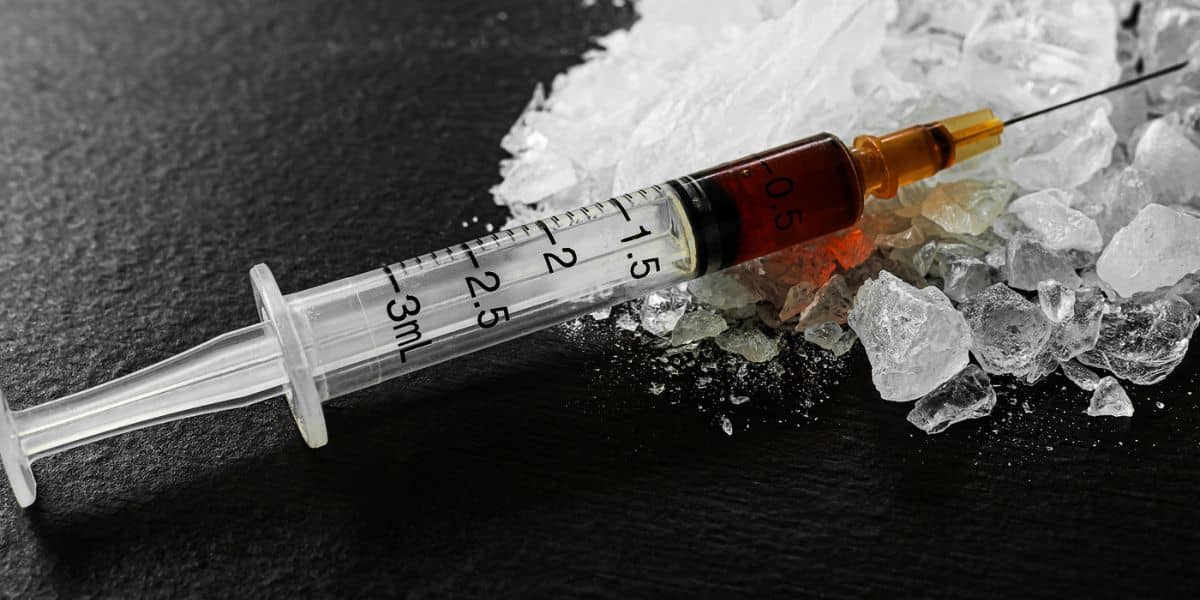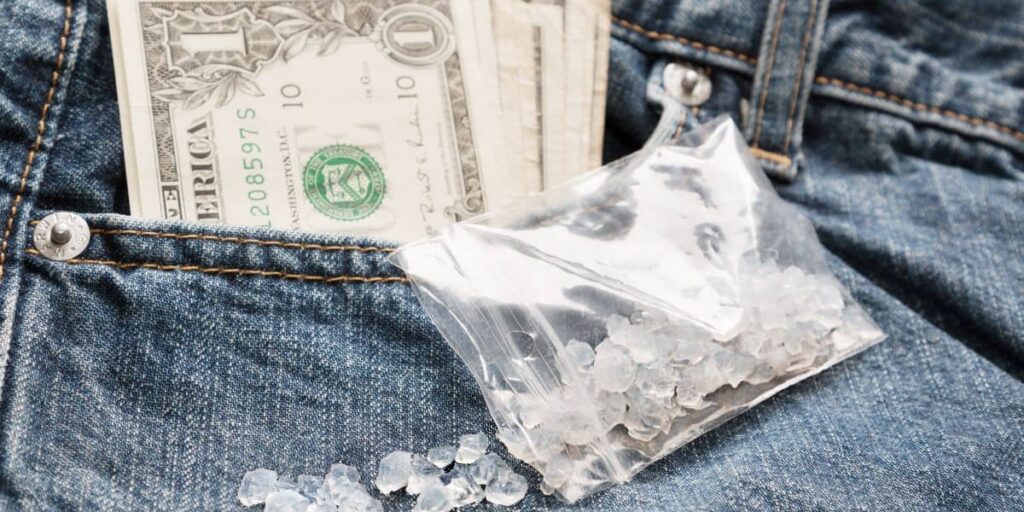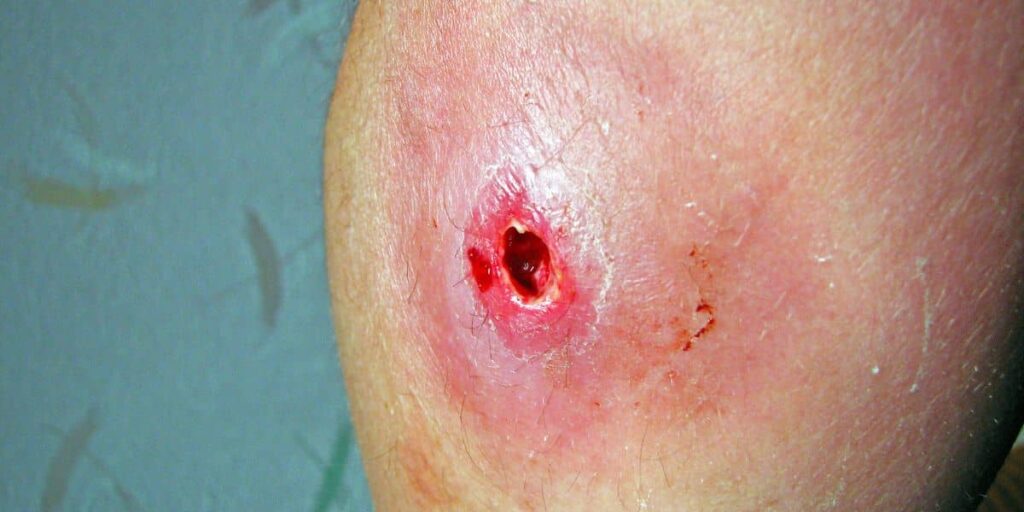Crystal Meth: Signs of Use and Addiction


In the United States, almost 12 million people have tried meth or crystal meth, also known as “ice,” at least once. This makes it the second most commonly used illegal drug after cannabis.
People turn to crystal meth for a myriad of reasons. Some women use it in the hopes of shedding pounds, while men may seek to enhance their sexual prowess. People who are homeless may use drugs to stay awake, protect their things, avoid feeling hungry, and control their emotions. They may also use drugs to have more energy for dancing or to increase their sex drive.
Yet, the fleeting advantages offered by crystal meth do not justify the significant danger of meth addiction. Regular use often leads to tolerance, compelling users to consume increasingly larger doses to achieve the same euphoric effects.
What Is Crystal Meth?
Crystal methamphetamine is a synthetic drug made for recreational use. Highly addictive and potent, with a higher risk of dependency than other drugs in its category.
People smoke crystal meth, which is a solid form of methamphetamine. It is highly addictive and affects the central nervous system. Its chemical structure is like amphetamine, a drug used for narcolepsy and attention deficit hyperactivity disorder (ADHD).
Crystal Meth Street Names
Crystal meth goes by various street names, including:
- Ice
- Speed
- Tina
- Crystal
- Tweak
- Crank
- Glass
- Blue
- Jib

Crystal Meth Use Symptoms
Indications and behaviors associated with crystal meth use include:
- Reduced appetite
- Elevated energy levels
- Boosted confidence
- Shortened reaction time
- Diminished need for sleep
- Paranoia
- Aggressiveness
- Irritability
- Depression
- Exhaustion
Extended consumption of crystal methamphetamine can lead to a psychotic state known as “tweaking,” characterized by a sensation akin to crawling beneath the skin. This feeling often prompts individuals to pick at their skin, resulting in numerous scabs.
Inadequate dental care is frequently linked with crystal meth usage, leading to a condition dubbed “meth mouth.” This phenomenon results from crystal meth inducing dry mouth, grinding of teeth, and clenching of the jaw, all of which contribute to significant dental deterioration.
What Does Crystal Meth Look Like?
Crystal meth comes in different colors like bluish-white, yellow, orange, pink, or brown. It looks like glass shards or shiny pebbles before it is crushed into powder. The different colors come from the chemicals and additives used during production, showing the maker’s unique technique and expertise.
Crystal Meth Addiction
Crystal methamphetamine poses a greater risk than other forms of methamphetamines because of its specific composition. This is primarily because it can rapidly reach high levels in the body, significantly increasing the risk of addiction.
Desoxyn vs Meth
Desoxyn is a brand name for a medication called methamphetamine. The FDA has approved it for treating obesity and ADHD. Available in immediate and extended-release versions, 5, 10, and 15mg tablets.
Desoxyn is the only legal form of methamphetamine. It has a similar chemical structure to crystal meth, but its use is limited.
How Long Does a Crystal Meth High Last?
The duration and strength of a crystal meth high varies based on the method of consumption. For instance, injecting, snorting, or smoking crystal meth produces an instantaneous rush, whereas oral intake results in a delayed onset, typically around 20 minutes. Additionally, it can also be administered rectally.
Smoking crystal methamphetamine allows for rapid attainment of high concentrations in the brain. The advantage of inhaling it as smoke compared to ingesting it orally is the swift and potent onset of its effects.
Contrary to cocaine, the effects of crystal meth endure for an extended period, potentially keeping users awake for up to 12 hours. Consequently, those engaging in a crystal meth binge, often referred to as being “on a run,” might find themselves able to remain awake for up to ten days, usually with minimal consumption of food or water.
Crystal Meth Side Effects
Using crystal meth induces sensations of euphoria, empowerment, and confidence, alongside a surge in energy, productivity, and sexual performance. Yet, as the pleasurable effects diminish, users often experience anxiety, depression, headaches, and confusion.
Short-term effects of crystal methamphetamine use involve:
- Euphoria
- Increased alertness and tension
- Decreased appetite
- Extreme weight loss
- Gum disease
- Faster breathing
- Rapid and irregular heart rate
- Increased blood pressure and body temperature
Long-term effects of crystal methamphetamine use include:
- Intense itching, picking at skin, scabs, and skin sores
- Tooth decay
- Heart attack
- Seizures
- Memory loss
- Paranoia
- Hallucinations
- Anxiety
- Confusion
- Changes in brain structure and function
- Mental health issues
- Parkinson’s disease

Crystal Meth Withdrawal
While the initial 24 hours following the last dose of crystal meth may present severe withdrawal symptoms, particularly intense cravings, the overall withdrawal experience is generally moderate. It tends to subside within two weeks of cessation. The most severe symptoms typically diminish after the first day, gradually lessening throughout 7 to 10 days.
Crystal Meth Withdrawal Symptoms
Upon discontinuing the use of methamphetamines like crystal meth, individuals may experience withdrawal symptoms, including:
- Anxiety
- Fatigue
- Severe Depression
- Psychosis
- Intense drug cravings
Crystal Meth Overdose
Consuming high amounts of crystal meth can undoubtedly lead to an overdose. Overdoses of this nature can be lethal, causing death through heart attacks, strokes, or complications affecting multiple organs as a result of increased body temperature.
Crystal Meth Addiction Treatment
Investigations into crystal methamphetamine addiction are advancing, with explorations into innovative treatments like vaccines and brain stimulation techniques. While there are no government-approved medications for treating crystal meth dependence, it can still be effectively treated.
Studies show that talking therapies like cognitive behavioral therapy and using rewards can help treat meth addiction.” Talking therapies involve discussing thoughts and behaviors to promote healthier choices and coping mechanisms. Rewards can motivate people to continue their treatment and make positive life changes.
Treatment for Crystal Meth Addiction at White Oak Recovery Center
White Oak Recovery Center understands the importance of addressing personal and medical challenges that come with substance use. This is necessary to provide effective treatment. From our exceptional medical detoxification program to our evidence-based treatment programs, WORC covers every facet of addiction recovery.
Contact us to talk to one of our compassionate treatment specialists. Discover our behavioral therapies, such as cognitive behavioral therapy (CBT). Our specialists are committed to helping you during your recovery journey. They are prepared to assist with any questions or concerns you may have. You’re not alone in this; we’re just a phone call away.

Am I covered for addiction treatment?
Your insurance may cover treatment. Call now for an entirely free and confidential assessment. Recovery starts with a phone call.

- “Methamphetamine.” United States Drug Enforcement Administration, Oct. 2022.
- Buxton, Jane A., and Dove, Naomi. A. “The Burden and Management of Crystal Meth Use.” Canadian Medical Association Journal, Jun. 3.
- “Methamphetamine Overview.” National Institute on Drug Abuse, Oct. 2019.
- Allerton, Michael and Blake, William. “The ‘Party Drug’ Crystal Methamphetamine: Risk Factor for the Acquisition of HIV.” The Permanente Journal, 2008.
Medical Disclaimer:







